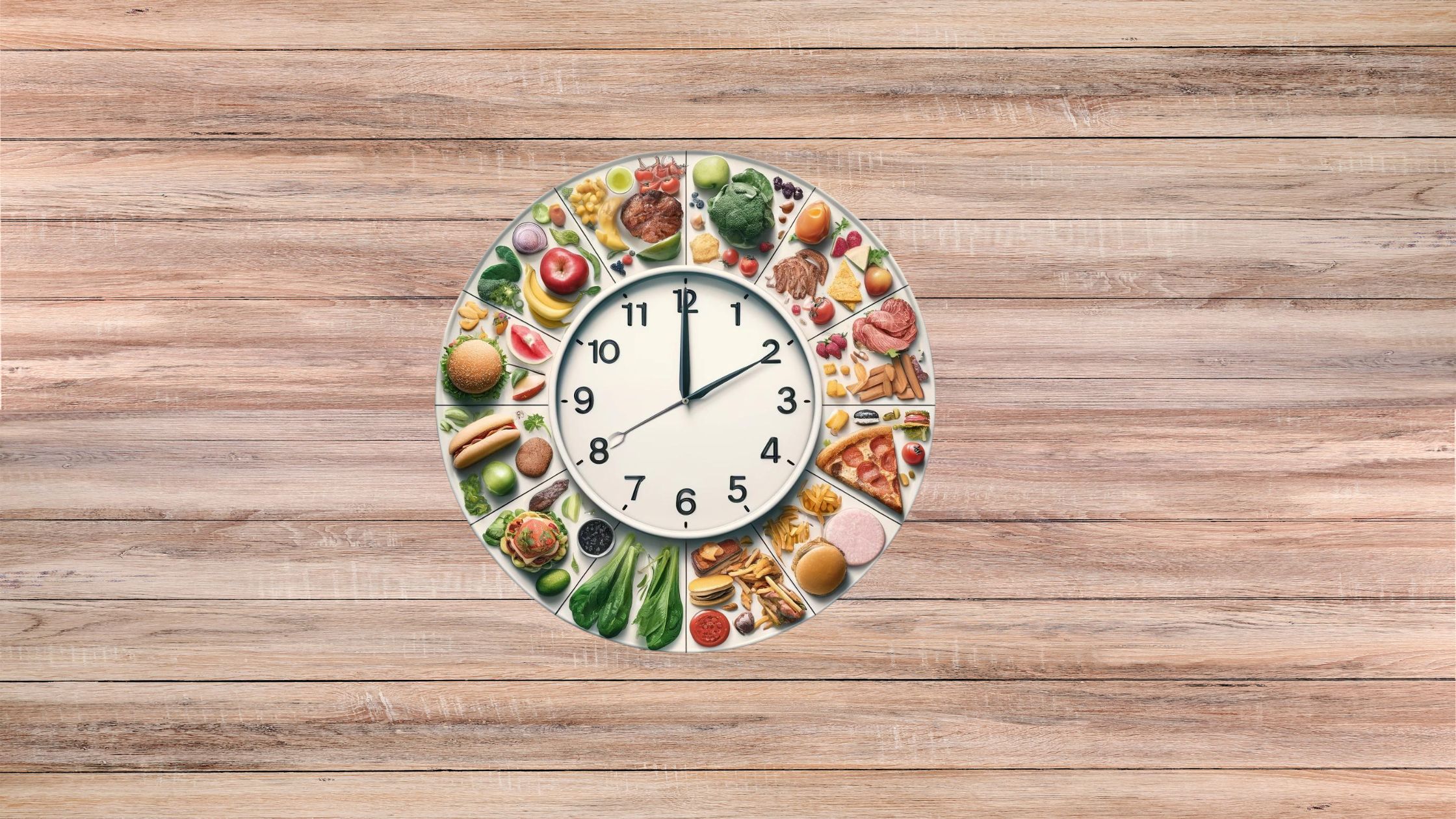Picture this: It’s early in the morning. The sun starts to rise, and you choose water over breakfast. You’re starting intermittent fasting, like many others who know its benefits. You think of the good that will come: losing weight, a faster metabolism, and controlled blood sugar. It’s not just a diet change; it’s a new way of life that needs a good plan to work.
You’re excited to try different fasting schedules, and you’re interested in the 16/8 method. Eating dinner by 8 pm and waiting until noon for breakfast seems possible. This journey includes eating the right foods. Foods that do more than fill you up. They should give your body all it needs to do well under fasting.
Starting this routine, each drink of water or tea reminds you of the promise you made to yourself. You listen to your body, knowing when you’re really hungry or just thirsty. You choose healthy foods. Keeping track of your success helps you fight cravings and feel more energetic. You understand every day gets you closer to enjoying all the benefits.
Understanding the Intermittent Approach to Eating
These days, many people are trying intermittent fasting to get healthier and manage their weight. This approach mixes times of not eating with times when you can eat. It highlights a regular eating pattern. Starting this journey means learning the basics and exploring different fasting schedules. This way, you can enjoy its benefits and avoid any risks.
Grasping the Fundamentals of Intermittent Fasting
Intermittent fasting is more of an eating pattern than a diet. It focuses on when to eat instead of what to eat. The idea is to balance your eating and fasting periods. This balance helps in losing weight. It also improves your health by bettering blood sugar, cholesterol, and blood pressure levels.
Considering Health Benefits and Potential Pitfalls
Intermittent fasting comes with several benefits like better weight control, improved insulin sensitivity, and brain health. Yet, it’s important to watch out for any downsides. Beginners might feel uncomfortable or have strong cravings at first. Also, make sure your fasting plan doesn’t drain your energy or concentration.
When starting intermittent fasting, pick a schedule that matches your health and lifestyle. It’s wise to talk to a healthcare professional before you begin. They can make sure the plan suits your needs and boosts your health.
Key Takeaways
- Choose an intermittent fasting schedule suitable for your lifestyle, be it the 16/8 method or another approach.
- Begin your fasting journey gradually to adjust both body and mind to the new eating pattern.
- Ensure your meals are packed with proper nutrition, including a balance of proteins, fats, and carbohydrates.
- Maintain hydration with water and calorie-free drinks to manage hunger and support your health.
- Monitor your progress with more than just body weight—keep an eye on energy levels and overall well-being for a comprehensive view of your journey’s success.
- Don’t be discouraged by challenges—stay adaptable, reach out for community support when necessary, and seek professional guidance if you hit roadblocks.
Here’s 5 Quick Tips for You: Intermittent Fasting
1. Choosing the Right Intermittent Fasting Schedule
Exploring Popular Fasting Schedules: 16/8, 5:2, and Others
Choosing a fasting schedule that fits your life can help you stick with intermittent fasting. The 16/8 method has you fast for 16 hours and eat within an 8-hour window. For example, you would eat from 12 pm to 8 pm. Another option, the 5:2 diet, means eating normally for five days and reducing calories for two days.
- 16/8 Method (Time-Restricted Eating)
- 5:2 Diet (Intermittent Energy Restriction)
- Alternate-Day Fasting (24-Hour Fasts, EOD)
- One Meal A Day (OMAD)
- Eat-Stop-Eat (24-Hour Fast Once or Twice a Week)
| Fasting Method | Description | Duration | Frequency |
|---|---|---|---|
| 16/8 | Daily fasting with 8-hour eating window | 16 hours | Daily |
| 5:2 | Weekly pattern with 2 days of calorie restriction | 24 hours | 2 days/week |
| Alternate-Day Fasting | Fasting every other day | 24 hours | 3-4 days/week |
| OMAD | Consuming all daily calories in one meal | 23 hours | Daily |
| Eat-Stop-Eat | One or two 24-hour fasts per week | 24 hours | 1-2 days/week |
Starting an intermittent fasting schedule can change your life. But, finding the right one is crucial. It must match your lifestyle and health goals. You might like time-restricted eating, alternate day fasting, or the 5:2 diet. Each one requires a custom approach for best results.
| Method | Overview | Suitable For |
|---|---|---|
| Time-Restricted Eating | Eating within a set time frame each day, usually for 6-8 hours, followed by a fast of 16-18 hours. | Individuals with a consistent daily routine and those looking to simplify meal planning. |
| Alternate Day Fasting | Alternating between days of normal eating and days restricted to one 500-600 calorie meal. | Those who prefer significant fasting challenges interspersed with days of normal eating. |
| 5:2 Diet | Two non-consecutive days of significant calorie reduction each week, eating normally on other days. | People seeking balance between disciplined fasting and dietary freedom. |
Choosing to fast affects both body and mind. Time-restricted eating suits those who like a daily routine. It’s a simpler way to start fasting. Meanwhile, alternate day fasting is for those ready for more intense cycles of eating and fasting.
- Start with a 12-hour fast. Then, increase the time as you get more comfortable.
- Listen to your body. Adjust your fasting times to stay in tune with your energy and concentration levels.
- The 5:2 diet offers eating window flexibility. It’s easier to fit in healthy, varied foods.
Selecting your fasting approach is about more than food. It’s about commitment. Including proper nutrition and drinking plenty of water makes all the difference. Balanced meals help keep your energy up and your mind clear.
Remember, the best fasting plan feels right for you. It should fit your daily life and improve your health and happiness.
2. Easing Into Fasting and Adjusting Your Lifestyle
Starting your intermittent fasting journey changes both body and mind. To make it smooth, think about your personal schedule and body’s signals. This way, you can adjust your fasting to fit you best.
Tactics for Slowly Shortening Your Eating Window
Starting to fast doesn’t have to be sudden. You can slowly cut down your eating hours from what you’re used to. Start with a manageable 12-hour fast. Then, little by little, work towards a fasting window that meets your needs and energy levels.
- Begin with a 12-hour fast overnight for enough rest and recovery.
- Try to cut the eating window by 1 hour every week.
- Keep track of how you feel, especially your hunger and energy.
Aligning Meal Times with Your Circadian Rhythm
Your circadian rhythm, or body’s internal clock, impacts your fasting. Eating at times that match this rhythm can make you more alert during the day and improve sleep at night.
“Eating in tune with your circadian rhythm can help improve metabolic processes and optimize weight management.”
- Have your last meal 2-3 hours before bedtime to match your circadian rhythm.
- Plan meals when you’re most active for better energy use.
- Observe when you naturally get hungry to plan your fasting better.
Making Fasting Work with Your Personal Schedule
When trying a new health routine, consider how it fits your daily life. Intermittent fasting schedules are flexible. They let you keep up with social and work commitments while reaching your health goals.
| Intermittent Fasting Schedule | Description | Suitable For |
|---|---|---|
| 16/8 Method | Fasting for 16 hours, eating within 8 hours. | People with regular work hours who want structure. |
| 5:2 Diet | Eat normally for 5 days, then 2 days of fewer calories. | Those liking less frequent, but longer fasting times. |
| Warrior Diet | Fast for 20 hours, then eat in a 4-hour window in the evening. | Those with flexible evenings who enjoy big meals. |
Remember, your fasting plan should fit your personal schedule and lifestyle for the best chance of sticking with it and seeing results.
3. Supercharging Your Fasting with Proper Nutrition
When you start intermittent fasting, eating nutrient-dense foods during your meals is key. These foods boost the benefits of intermittent fasting. The goal is to not only eat less often but to make every meal nutritious with meal planning and a healthy diet.
A Mediterranean-style diet is ideal for this kind of eating. It includes a lot of vegetables, fruits, proteins, and whole grains. These foods keep you full longer. Here’s a straightforward meal planning guide that covers everything you need.
- Start with lean proteins like fish or chicken to support muscle repair and provide long-lasting satiety.
- Include a variety of vegetables, which are not only nutrient-dense but also high in fiber, helping you stay full throughout your fasting hours.
- Choose whole grains like quinoa or brown rice for a sustained energy release.
- Add healthy fats such as avocados or nuts, as they are critical for hormone production and cell function.
During your eating times, make sure every bite counts towards proper nutrition. This approach is more than just losing weight—it’s about feeding your body well. Imagine a Mediterranean-inspired plate in your eating window:
| Food Category | Suggested Options | Benefits |
|---|---|---|
| Proteins | Grilled chicken, salmon, legumes | Muscle maintenance, satiety |
| Vegetables | Kale, spinach, bell peppers | Essential vitamins, fiber |
| Whole Grains | Whole wheat pasta, barley, farro | Long-lasting energy, digestive health |
| Healthy Fats | Olive oil, almonds, avocados | Cellular function, satiety |
| Fruit | Berries, apples, oranges | Natural sugars, antioxidants |
By choosing nutrient-dense foods and following intermittent fasting and Mediterranean-style diet principles, you’ll improve your health greatly. Always listen to your body and drink lots of water. Enjoy the variety of nutritious foods in your eating times. Make smart food choices for a healthier you.

4. Creating a Supportive Environment for Fasting
Starting an intermittent fasting journey is impacted by your surroundings. It’s important in social settings and building community support. By being around supportive friends, joining online groups, and having an accountability buddy, you stick to your health goals better.
Choosing a flexible approach that fits your dietary preferences is crucial. This makes sure your fasting schedule works well with your day-to-day life. It’s key to be strong in different social situations during this journey. Next, we’ll explore dealing with food-centered events and the importance of community.
Learning How to Handle Social Settings and Food
When you’re fasting, social events don’t have to be a problem. Plan ahead by timing get-togethers during your eating hours or choose non-food activities. Talking about your fasting with friends can make them more supportive of your diet in social settings.
Seeking Community Support and Accountability Partners
Having support makes sticking to your fasting plan easier. Online groups, health communities, and virtual hangouts are great for finding community support. An accountability partner can really help too. They motivate you, share their journey, and increase your determination with their successes and challenges.
| Strategy | Benefit |
|---|---|
| Scheduling Social Interactions | Align with eating windows to enjoy gatherings guilt-free |
| Finding Like-Minded Communities | Provides a platform for shared learning and experiences |
| Engaging an Accountability Partner | Offers mutual encouragement and keeps you on track |
| Communicating Dietary Preferences | Promotes understanding and respect for your lifestyle choices |
Building a strong support system is very empowering during your intermittent fasting journey. Embrace the power of community support. Let it push you towards a healthier future filled with valuable connections and a true sense of accountability.
5. Staying Hydrated and Recognizing Hunger Cues
Starting an intermittent fasting plan means you need to know your body’s signals well. It’s crucial to stay hydrated to control hunger, stay sharp, and help your body work right. By drinking plenty of water, you can avoid confusing thirst with hunger.

It’s also important to tell the difference between true hunger cues and just eating out of habit. Herbal teas and other drinks without calories help with hydration and managing your appetite.
Here are some useful tips:
- Schedule your fluid intake: Try to drink water all through the day, not only when you’re thirsty.
- Always have water on hand: Keeping a water bottle with you encourages you to drink more and ensures you stay hydrated.
- Prioritize calorie-free beverages: Herbal teas and black coffee are great for when you’re not eating.
- Listen to your body: Stop to think if you’re really hungry or just need some water.
By keeping well-hydrated and understanding what your body tells you, you’ll support your intermittent fasting efforts better. Remember, fasting is different for everyone. It’s key to adjust these tips to fit what works for you.
Monitoring Your Progress and Adjusting As Needed
Starting an intermittent fasting journey requires dedication and understanding. It’s important to keep an eye on your progress. This means using apps and tracking how you feel overall.
Paying attention to your energy, body changes, and health is key. These observations help you tweak your fasting for the best results.
Tracking Metrics Beyond the Scale
It’s not just about weight. To fully understand your health, track various body metrics. This includes body fat percentage, muscle mass, and hydration levels.
These figures reveal more about your fitness and how well your fasting routine works.
Using Technology to Your Advantage: Apps and Tools
Intermittent fasting apps are a big help. They keep you on schedule, remind you, and track your progress. This helps you adjust your fasting as needed.
Reflecting on How You Feel: Energy Levels and Well-Being
Energy levels show how your body adjusts to fasting. Reflect on your physical and mental state. How has starting intermittent fasting changed how you feel?
Continuously checking in with yourself identifies successful patterns. It also shows you what might need to change.
| Date | Weight | Body Fat % | Muscle Mass | Energy Level | Notes |
|---|---|---|---|---|---|
| 01/04 | 175 lbs | 22% | 130 lbs | High | Felt energetic all day |
| 15/04 | 173 lbs | 21.5% | 131 lbs | Medium | Struggled with afternoon energy dip |
| 30/04 | 171 lbs | 21% | 132 lbs | High | Exercise routine feels easier |
Intermittent Challenges and Troubleshooting
If you’re trying intermittent fasting, you might face some challenges. Dealing with cravings is a common issue. It can stop even those who are very committed. Remember, facing problems is normal on your health journey. Finding the right intermittent fasting schedule that fits your life is crucial. You can start with short fasting times and slowly increase them. This helps your body adjust.
Proper preparation of your body and mind is important when fitting intermittent fasting into your life. Eating nutritious foods during your eating periods is key. Choose foods like berries, leafy greens, and lean proteins to keep energy up and focus sharp. On your eating days, try a colorful salad with grilled chicken or a quinoa bowl with veggies and avocado for balanced nutrition. Remember, staying hydrated helps make fasting easier and controls hunger.
Monitoring your progress is more than just weighing yourself. Look at body composition, fit of your clothes, and how you feel. When troubleshooting, patience is important if results aren’t quick. Hitting a plateau offers a chance to adjust your plan for better results. It’s always a good idea to seek advice from health experts to safely improve your fasting strategy. Small changes can lead to big wins in your fasting journey.




One response to “5 Quick Tips to Start Your Successful Intermittent Fasting Journey”
[…] probably heard about intermittent fasting for weight loss, but did you know it can also work wonders for extending your lifespan? That’s […]